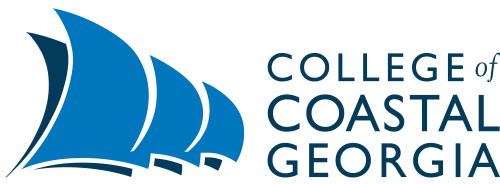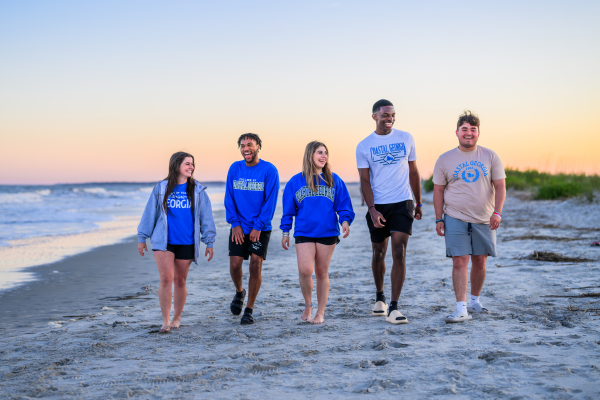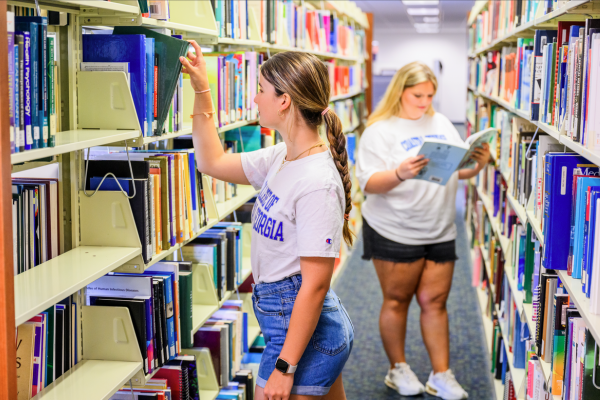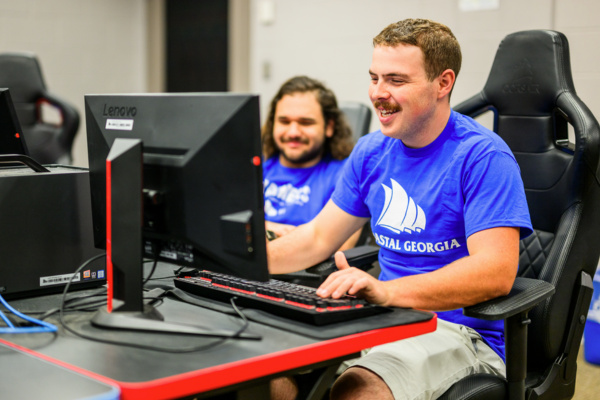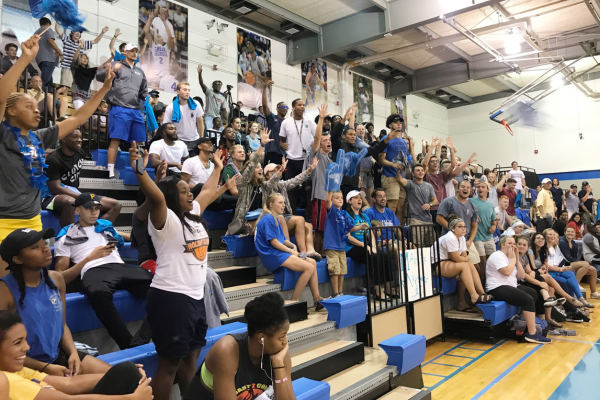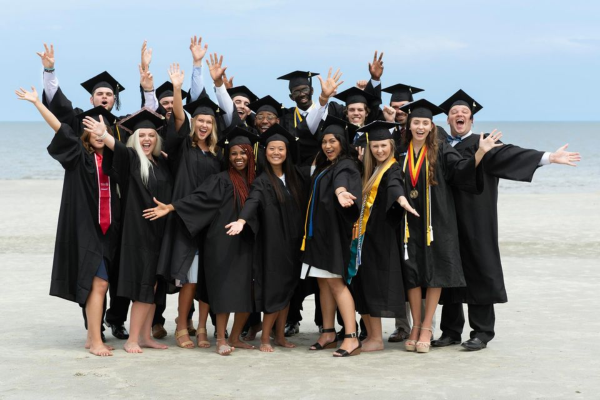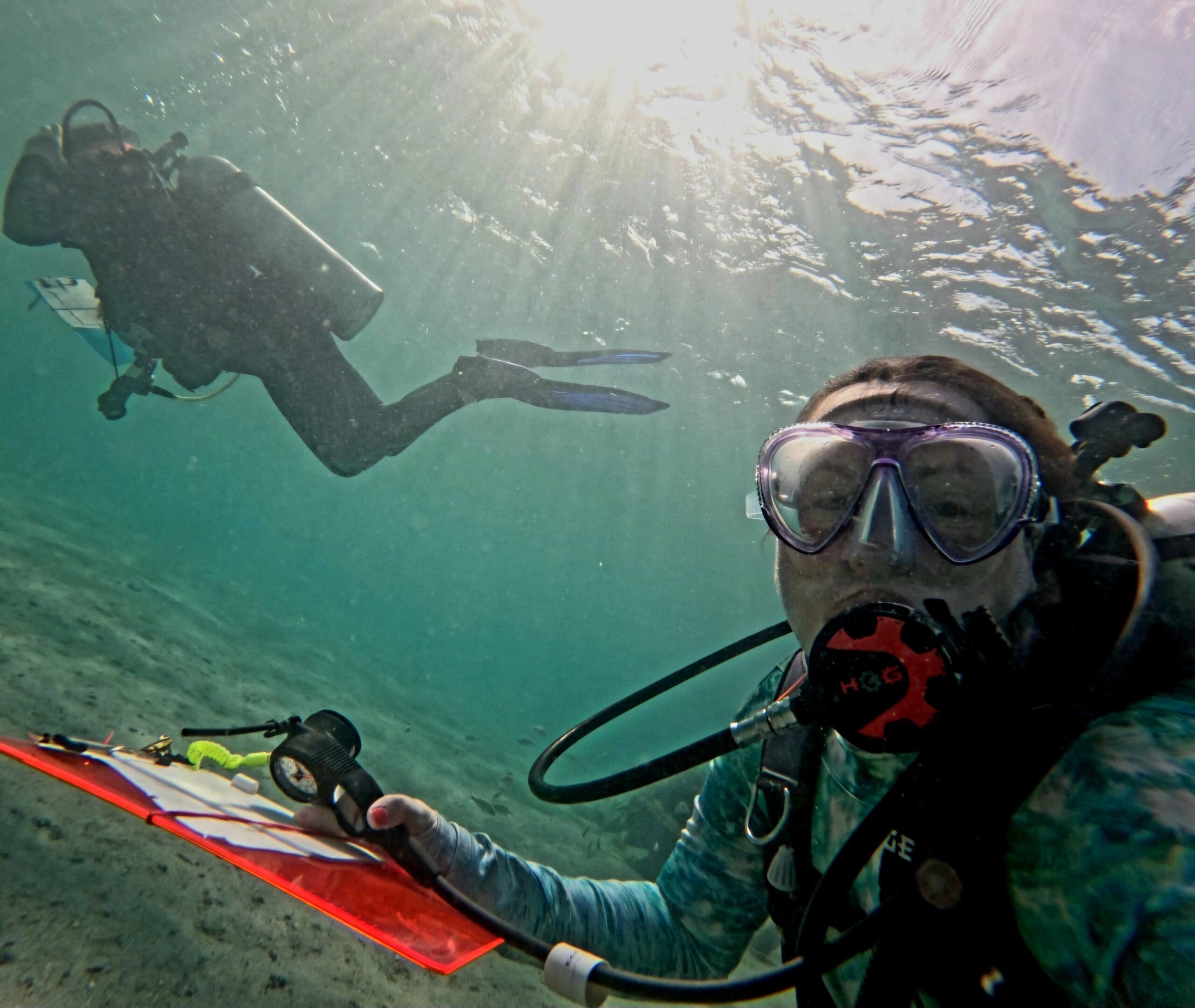
Students Dive into Research
The Blue Heron Bridge, located in Riviera Beach, Florida, is one of the most popular dive and snorkel sites due to its exciting underwater experience featuring artificial reefs and diverse marine life. The College of Coastal Georgia took advantage of this great location to give students a unique hands-on experience researching marine life through a new summer course—Scientific Diving. Through the course, students learned how to do research diving and later presented their projects at the College’s first Scientific Diving Research Poster Presentation.
This is the first time the course has been offered at the College. Assistant Professor of Environmental Science Dr. Kim Takagi was approached by a local diving shop to introduce the course to students. She connected with Oneida LG2 Environmental Solutions (LG2) who provided diver training for the course. LG2 is an environmental company that specializes in environmental compliance services across the United States, along with ecosystem restoration and monitoring. The company is owned by the Oneida Nation of Wisconsin and is headquartered in Jacksonville, Florida, with a field office in Savannah, Georgia. Dr. Traesha Robertson, associate professor of biology, Dr. Robin McLachlan, assistant professor of geology, and Takagi received scientific diving training from LG2 representatives, then helped train students alongside LG2. Dr. Christine Brown, program coordinator and assistant professor of health science, provided CPR/AED training, and Judy Wright, of Island Dive Shop on St. Simons Island, provided emergency first responder training and primary and secondary care training.
“The scientific diving course requires students to go through the safety training and techniques of how to do the science,” Takagi said. “Then in the end, students are supposed to demonstrate that they can do the science in the field and collect the data.”
Students created and designed their own projects, then carried out their project to demonstrate their scientific diving skills under the supervision of Robertson, McLachlan and LG2. The diving and skills trainings took place at Phil Foster Park, near Blue Heron Bridge, which is also where they did their diving research. At the park is the Phil Foster Snorkel Trail, located about 200 feet away from the shoreline. The trail is all artificial and was built to replicate the ecosystem of a barrier reef, featuring small sunken boats, artificial reef structures, and rock piles. Students divided into groups and conducted their research projects investigating the different reefs.

At the Scientific Diving Research Poster Presentation, students Emily Weber and Hannah Kay, presented “The Influence of Artificial Reef Structure on Biodiversity.” They observed three reef structures—a rock pile, a honeycomb-shaped reef, and a, reef module—over two days to determine overall biodiversity. They wanted to determine which structure-type had the highest biodiversity and if shape structure was a factor. To count the different species, students used videography and in-person observations to record data while diving in a circle. Their results showed that the honeycomb reef had the highest species diversity, and that species diversity varied across all three structures.
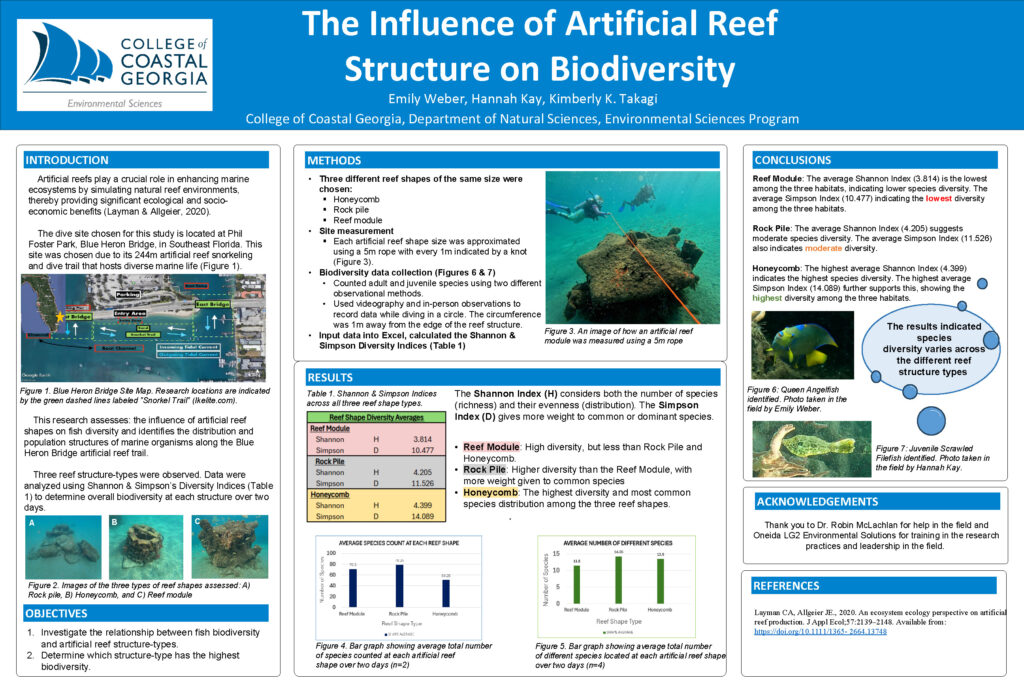
College of Coastal Georgia alum Harrison Faulk, and students Jaxson Grotz and Ella Sochia, presented “An Investigation of Invertebrate Community Composition Across Artificial Reef Types.” Their project investigated whether or not different artificial reefs had different invertebrate communities. They studied three different reefs: a platform reef module, a rubble pile reef, and a cinderblock reef. Results showed that total sessile invertebrate—invertebrate that are attached to objects and do not move, like clams—coverage did not differ across artificial reef types. Arthropods, such as lobsters and crabs, were most abundant in both the platform and cinderblock reefs. Mollusks were found to be the second most abundant in all reef types, excluding the rubble reef, where it was the most abundant.
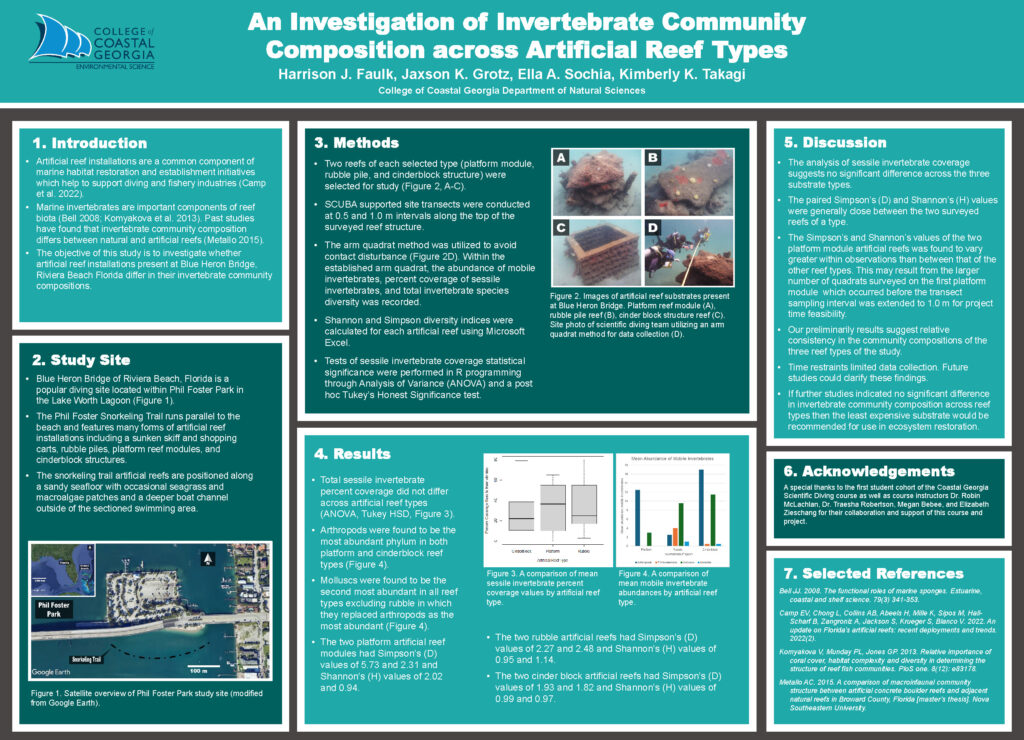
Students Kaylee Logan, Harley Raczynski, and visiting Georgia Highlands College student, Ansleigh Peshel presented “Relationship Between Fish Biodiversity and Habitat Complexity at Blue Heron Bridge, FL.” They investigated three reef habitats and their relationship to fish biodiversity: a coral reef, seagrass, and underneath the Blue Heron Bridge. Their results included higher fish biodiversity at the reef, followed by the bridge, and the lowest at the seagrass. There was no significant relationship between the reef structure and fish biodiversity. They highlighted the need for further research with larger sample sizes and more time to better understand the factors influencing biodiversity in marine ecosystems.
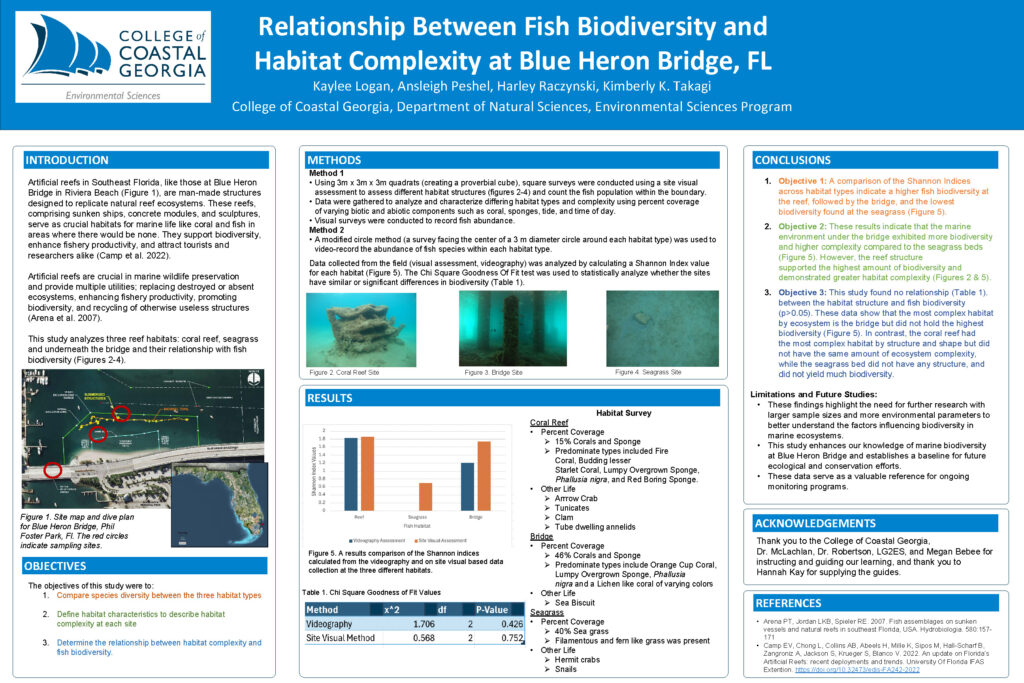
Harley Raczynski is a junior at the College, majoring in general studies with a focus on art. Raczynski comes from a family of scuba divers and is already scuba certified. He’s always been drawn to the water.
“When I learned that they had a course here for scuba diving, that was all I needed to hear,” he said. “Gathering the data was my favorite part of the scientific process. For me, the dopamine gets released when we’re in the field getting data. However, I started having trouble when we were trying to process the data and do statistics. Luckily, my partners in the group are very smart and helped.”
Raczynski encourages anyone with an interest in the water to take the course. Before enrolling at the College, he attended the University of North Georgia near Atlanta for two years. For someone who has lived next to the ocean his entire life, living inland, away from the ocean, was disorienting, he said. He came back to the area and enrolled at Coastal Georgia.
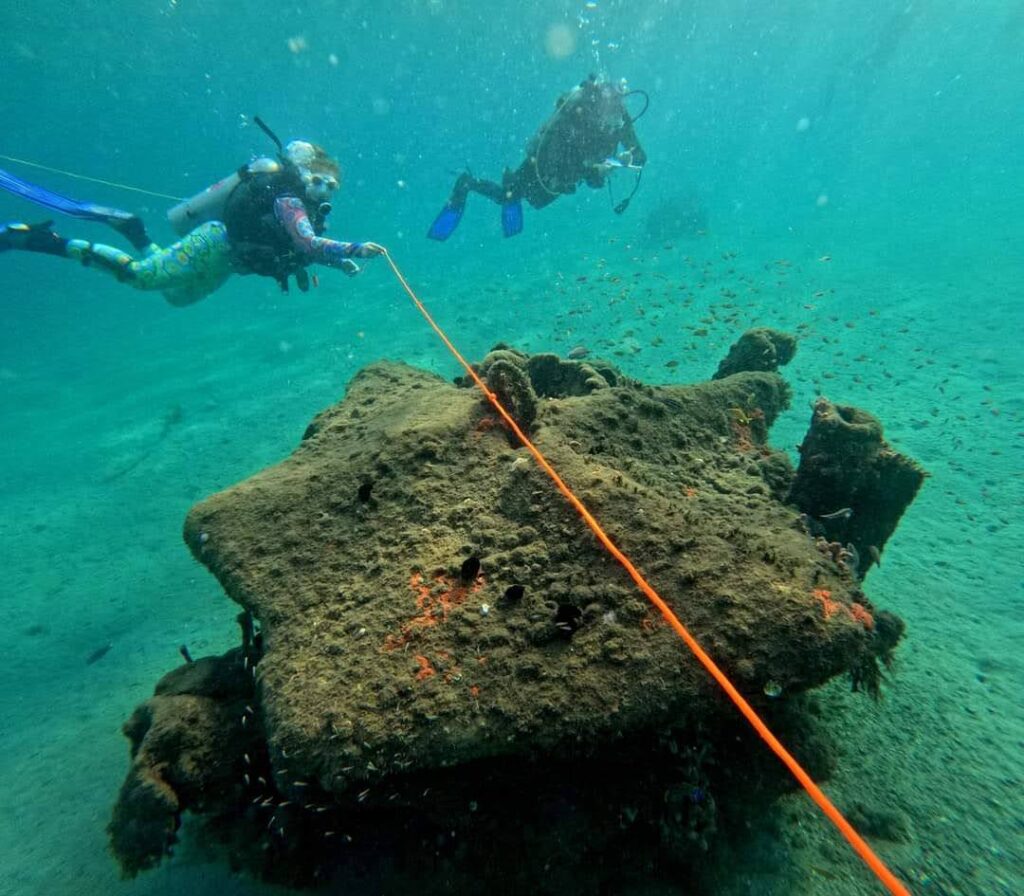
“If anyone values that or can relate to that feeling, they should take the class. It’s the best kind of field work you can do,” Raczynski said. “I don’t know what other kind of field work you can do that is as interesting as what we did.”
Senior Emily Weber is majoring in environmental science with a concentration in marine science. Like Raczynski, she’s also had previous diving experiences.
“When I learned that I could do research and one of my favorite activities, I thought it was a great opportunity to jump in and get involved,” she said. “The College has offered a lot of hands-on experiences with these wonderful professors. I thought it would be the perfect time to do this, learn these skills, and have fun with people I’m comfortable with.”
Through the course, Weber gained new skills she didn’t have before—such as rescue diving skills and CPR.
Weber is a non-traditional student. She graduated from another institution in 2015 and went on to have a career in retail business. She wasn’t enjoying her career and decided to go back to college to have fun learning something new. Weber always loved science, and now, after this course, she wants to be a research diver. She continued to commend the program and its support for students.
“I would definitely recommend this class to other people. It’s an opportunity you’re not going to get at other places with great professors. Dr. Takagi has been a friend, supporter, and a great leader. She makes things seem less stressful and makes you feel comfortable no matter your skill level,” Weber said. “You really connect with the teachers here. It feels like a family here, and that’s what I was looking for. I’ve had so many hands-on experiences because my teachers introduced me to those experiences. They tell you about different jobs and what you should apply for. I’ve never had teachers do that for me.”

The students are now certified research divers under the supervision of LG2. Their experience has not only expanded their academic learning, but also opened a new avenue for future career opportunities. Takagi considers that an all-around win for everyone.
Currently, Scientific Diving is only being offered during the summer semester. For more information on the class, contact Dr. Kim Takagi at ktakagi@ccga.edu.
